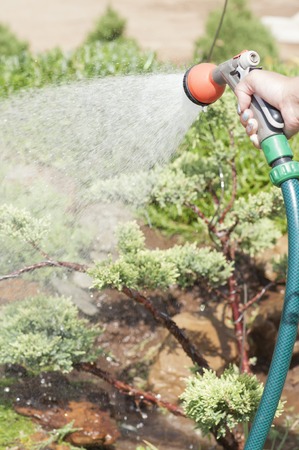1. Understanding Common Rodent Species in American Gardens
When it comes to natural rodent control methods for American homesteads and gardens, understanding the most common rodent species is essential. Across the United States, several types of rodents are frequently encountered by gardeners and homesteaders. These rodents can cause significant damage to crops, stored produce, and property structures. Below is an overview of the most prevalent species, their habits, and their impact:
| Rodent Species | Habitat | Main Habits | Impact on Homesteads & Gardens |
|---|---|---|---|
| House Mouse (Mus musculus) | Inside homes, sheds, barns; also outdoors near food sources | Nocturnal, prolific breeders, excellent climbers | Contaminates food supplies; gnaws on wiring and insulation; damages seedlings and young plants |
| Norway Rat (Rattus norvegicus) | Beneath buildings, woodpiles, compost heaps; prefers lower levels | Digs extensive burrows, omnivorous, aggressive scavenger | Eats stored grains and vegetables; undermines foundations; spreads disease |
| Roof Rat (Rattus rattus) | Trees, attics, upper parts of buildings; coastal and southern regions common | Excellent climbers, prefers fruits and nuts, active at night | Damages fruit trees and nut harvests; contaminates storage areas; chews through materials |
| Vole (Microtus spp.) | Lawn edges, under mulch or ground cover, garden beds | Create surface runways, mainly herbivorous, breed rapidly | Girdles tree trunks; eats roots and bulbs; causes patchy lawn damage |
| Pocket Gopher (Thomomys spp.) | Underground tunnels in gardens and fields throughout western U.S. | Seldom seen above ground, feeds on roots and tubers, creates mounds | Kills vegetable plants from below; disrupts irrigation systems; mounds interfere with mowing equipment |
The presence of these rodents can lead to direct crop loss and indirect issues such as attracting predators or increasing disease risk. Knowing which species you are dealing with will help you select the most effective natural control strategies for your homestead or garden.
2. Identifying Early Signs of Rodent Activity
Recognizing the first signs of rodent activity is crucial for effective, natural control on American homesteads and gardens. Rodents can cause significant damage to crops, stored food, and structures if their presence goes unnoticed. Early detection allows you to implement eco-friendly measures before an infestation escalates. Here’s how to identify evidence of rodents in your garden or around your home:
Common Evidence of Rodent Presence
| Sign | Description | Where to Look |
|---|---|---|
| Gnaw Marks | Rough or chewed edges on wood, plastic, wiring, or stored produce. | Shed doors, storage bins, wooden planters, fruit & vegetable storage areas. |
| Burrows | Tunnels or holes in soil, often near foundations or compost piles. | Garden beds, near outbuildings, under porches or decks. |
| Droppings | Small, pellet-shaped feces; fresh droppings are dark and moist. | Pantries, seed storage containers, along baseboards, tool sheds. |
| Damage to Plants/Food | Bite marks on fruits/vegetables, missing seeds, uprooted seedlings. | Vegetable patches, fruit trees, grain storage barrels. |
Additional Clues You Shouldn’t Ignore
- Noisy rustling sounds after dusk, especially in attics or walls.
- Nests made from shredded paper or dried grass found behind stacked supplies.
- Unusual pet behavior such as barking at specific spots or sniffing intensely near walls or storage areas.
Why Early Identification Matters
If you spot these early warning signs, it’s time to act using natural rodent control methods. Quick recognition helps protect your family’s health and preserve your garden’s yield without relying on harsh chemicals. In the next sections, we’ll explore safe and sustainable solutions tailored for American homesteads.

3. Habitat Modification and Prevention Strategies
One of the most effective natural rodent control methods for American homesteads and gardens is modifying your property to make it less inviting to unwanted critters. By focusing on prevention, you can significantly reduce the chances of rodents settling in. Here are some practical tips and strategies:
Remove Food Sources
Rodents are opportunistic feeders, so eliminating easy access to food is crucial. Store bird seed, pet food, and livestock feed in tightly sealed containers. Harvest ripe fruits and vegetables promptly, and regularly clear away fallen produce or spilled compost.
Seal Potential Entryways
Rodents can squeeze through surprisingly small openings. Inspect your home’s foundation, walls, doors, and windows for cracks or holes. Use caulk, steel wool, or hardware cloth to seal gaps—especially around pipes and vents.
| Common Entry Points | Recommended Sealant |
|---|---|
| Gaps under doors | Door sweeps, weather stripping |
| Openings around pipes | Steel wool + caulk |
| Cracks in foundation | Masonry filler |
| Vents & attic spaces | Hardware cloth (¼-inch mesh) |
Strategic Landscaping Tips
- Trim back vegetation: Keep shrubs, trees, and tall grasses trimmed at least 2-3 feet away from buildings to eliminate hiding spots and pathways for rodents.
- Avoid dense ground covers: Replace thick ivy or juniper beds with low-growing herbs or mulch to discourage nesting.
- Create a buffer zone: Maintain a clear gravel strip along your home’s perimeter as a deterrent.
- Store firewood properly: Elevate wood piles at least 18 inches off the ground and keep them far from structures.
The Benefits of Prevention-First Approaches
Taking proactive steps reduces the need for traps or chemical repellents later on. Habitat modification not only makes your homestead less attractive to rodents but also supports a healthier environment for your family and local wildlife.
4. Encouraging Natural Predators
One of the most effective and sustainable ways to manage rodent populations on American homesteads and gardens is by inviting native natural predators into your landscape. Birds of prey like owls and hawks, as well as certain species of snakes, play a critical role in keeping rodents in check without the use of chemicals or traps. By creating a predator-friendly environment, you support local biodiversity while reducing the need for human intervention.
Why Attract Natural Predators?
Natural predators can significantly reduce rodent numbers as part of their regular diet. For example, a single barn owl family can consume thousands of rodents in a nesting season. Encouraging these beneficial animals not only helps with pest control but also promotes a balanced ecosystem on your property.
Predator-Friendly Practices
| Predator | How to Attract | Best Practices |
|---|---|---|
| Owls (Barn Owls, Screech Owls) | Install owl nest boxes at least 10-15 feet above ground in quiet areas; minimize outdoor lighting at night | Avoid using rodenticides; maintain some open grassy areas for hunting |
| Hawks (Red-tailed, Cooper’s Hawk) | Plant tall trees or leave dead snags for perching; maintain open fields for hunting grounds | Limit disturbance near potential nesting sites; protect large trees during landscaping |
| Snakes (Garter Snakes, King Snakes) | Create brush piles or rock piles for shelter; maintain native vegetation around property edges | Avoid killing nonvenomous snakes; educate family about beneficial snake species |
Nest Box Guidelines for Owls
- Use untreated wood and mount securely to avoid swaying.
- Place boxes away from busy human activity and direct streetlights.
- Regularly clean out old nesting material between seasons.
Important Considerations
- Never use rodenticides if you are trying to attract predators—these poisons can harm or kill wildlife that feed on affected rodents.
- Educate your family and neighbors about the benefits of these native predators to foster community-wide support for natural rodent control methods.
By adopting these predator-friendly practices, American homesteads and gardens can maintain healthy landscapes while letting nature do much of the work when it comes to controlling rodents.
5. Homemade and Organic Repellents
When it comes to keeping rodents out of your American homestead or garden, using homemade and organic repellents is a safe and eco-friendly solution. These methods are not only easy on your wallet but also ensure that your pets, children, and beneficial pollinators remain unharmed. Below, we share some tried-and-true recipe ideas and highlight commercial products made in the USA that align with natural living values.
Homemade Rodent Repellent Recipes
| Repellent Type | Ingredients | Directions | Best Use |
|---|---|---|---|
| Peppermint Oil Spray | 10 drops peppermint essential oil, 1 cup water, 1 tsp dish soap | Mix ingredients in spray bottle. Shake well before each use. | Spray entry points, around foundations, and garden beds. |
| Hot Pepper Deterrent | 2 tbsp cayenne pepper, 1 quart water, 1 tsp liquid soap | Simmer cayenne in water for 15 min, cool, strain, add soap. | Mist on plants’ soil line and fence bases (avoid edible leaves). |
| Garlic & Clove Sachets | Dried garlic slices, whole cloves, cheesecloth or mesh bags | Wrap garlic and cloves in cloth; tie shut. | Place near suspected rodent entryways or under sheds. |
American-Made Organic Commercial Options
If DIY isn’t your style or you want extra protection, several reputable American brands offer organic rodent repellents:
- Eco Defense Mice Repellent Pouches: Made with essential oils like peppermint and cinnamon; non-toxic and safe for indoor use.
- Mighty Mint Rodent Repellent Spray: Plant-based formula derived from US-grown peppermint oil; works indoors and outdoors.
- Grandpa Gus’s Mouse Repellent: Natural pouches using peppermint and cinnamon oils; trusted by many American gardeners.
Why Choose Organic Repellents?
Organic options avoid harsh chemicals found in traditional pesticides. They’re gentle on the environment, won’t contaminate soil or water sources, and are safe for homes with kids or pets. By embracing these natural solutions, you help foster a healthy ecosystem while keeping pesky rodents at bay.
6. Physical Barriers and Traps
Physical barriers and humane trapping are cornerstone techniques for natural rodent control on American homesteads and gardens. Many U.S. gardeners prefer these methods because they avoid chemicals and minimize harm to non-target wildlife. Understanding the range of available options and their correct application can help you protect your crops without disrupting the local ecosystem.
Review of Humane Trapping Methods
Modern trapping technology offers a variety of solutions that align with ethical standards and ecological responsibility. The most popular humane traps are designed to catch rodents alive, allowing for relocation away from your property. Below is a quick comparison:
| Trap Type | How It Works | Best For | Considerations |
|---|---|---|---|
| Live Cage Trap | Baited cage door closes when triggered | Mice, rats, chipmunks | Check frequently; release rodents far from home |
| Bucket Trap | Rodents fall into bucket via rolling mechanism | Mice, voles | Must be checked often to prevent stress or drowning |
| Electronic Trap | Delivers a quick, humane shock | Mice, small rats | Requires batteries; not for outdoor wet conditions |
Types of Physical Barriers Favored by U.S. Gardeners
Physical barriers serve as the first line of defense in many American gardens, preventing rodents from accessing plants and stored produce. Here are some commonly used options:
- Hardware Cloth: This galvanized wire mesh is highly effective when buried around garden beds or chicken coops to block burrowing rodents.
- Raised Beds with Lined Bottoms: Lining raised beds with hardware cloth deters gophers and moles.
- PVC Pipe Guards: Wrapping young fruit tree trunks with PVC or metal collars prevents gnawing by rabbits and voles.
How to Use Barriers and Traps Without Disrupting Your Ecosystem
Sustainable rodent management means targeting only pest species while allowing beneficial wildlife—such as snakes, owls, or pollinators—to thrive. To achieve this balance:
- Select barrier mesh sizes that exclude rodents but permit smaller harmless creatures to pass through.
- Avoid over-trapping; set live traps only in areas with active rodent signs.
- Release captured animals in suitable habitats far from residential zones and natural preserves to prevent ecological imbalances.
Summary Table: Best Practices for Physical Control Methods
| Method | Main Benefit | Ecosystem Impact |
|---|---|---|
| Barriers (hardware cloth, raised beds) | Prevents access without harming animals | Low—does not affect non-target species if installed carefully |
| Live Traps | No-kill option; easy monitoring of populations | Moderate—requires responsible relocation practices |
7. Long-Term Maintenance and Monitoring
To ensure that natural rodent control methods remain effective for American homesteads and gardens, it’s essential to establish a consistent routine of maintenance and monitoring. Rodent issues can quickly return if preventive measures are not maintained year after year. Regular inspections, record-keeping, and timely action form the backbone of sustainable pest management.
Routine Inspections
Schedule regular inspections of your property—at least once per season—to check for new signs of rodent activity such as droppings, gnaw marks, burrows, or damaged plants. Pay special attention to outbuildings, compost piles, wood stacks, and areas where food is stored.
Record-Keeping
Maintaining detailed records helps identify patterns in rodent activity and track the effectiveness of different control strategies. Use a simple logbook or spreadsheet to note dates of inspections, observations made, actions taken, and results over time. This organized approach helps you spot recurring problem areas and adapt your methods accordingly.
Sample Rodent Monitoring Log
| Date | Location Inspected | Signs Observed | Actions Taken | Follow-Up Needed |
|---|---|---|---|---|
| 04/10/2024 | Garden Shed | Dropped seeds, gnaw marks | Replaced traps, sealed hole | Inspect again in 2 weeks |
| 05/12/2024 | Chicken Coop | No new activity | N/A | Continue monthly checks |
Adapting Your Approach
If you notice increased rodent activity despite your efforts, it may be time to rotate methods or reinforce habitat modifications. For example, increase frequency of trap checks or add more physical barriers where breaches are found.
Tips for Long-Term Success:
- Keep vegetation trimmed and debris cleared away from structures.
- Store animal feed in sealed containers.
- Encourage natural predators by installing owl boxes or creating wildlife-friendly habitats.
- Educate household members about proper waste disposal and storage practices.
By integrating ongoing maintenance with systematic monitoring and record-keeping, American homesteads and gardens can enjoy lasting protection from rodents using safe, natural methods—ensuring each growing season is productive and pest-free.


